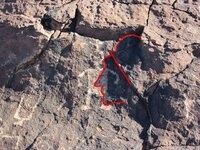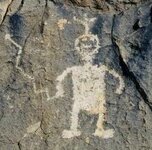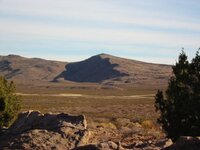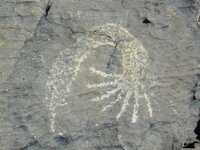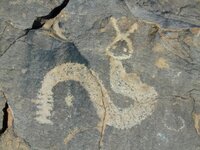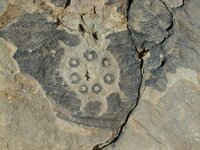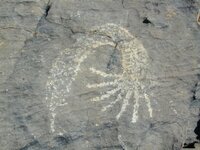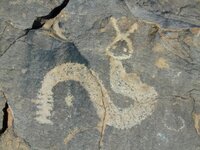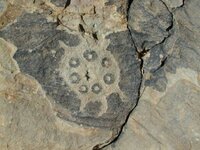Springfield
Silver Member
There are shadow signs, but very few. They were used to draw attention to something else - something close by and unmistakable. There should be no guesswork needed, no artistic imagination required. The helmeted soldier below (his shadow outlined) is drawing the viewer's attention to 'Happy Man'. Happy was engraved within the shadow to draw attention to the fact that he is not a native petroglyph like so many others in the near vicinity, but created by the folks who used the shadow. Happy's right arm is a zigzag pointer. When you sight down his arm, you are looking at the zigzag ridgeline in the distance. Go there.
Shadow signs and lookalike rocks were seldom used, but when they were, they were unmistakable and led the viewer quickly to the 'real' sign close by, usually within a stone's throw. These things were used in the olden days when the terrain was unmapped. Most of the carvings and other valid clues you are finding are much more recent - 1930's for many of them (that's right, these are not 'Spanish'), and most are designed to look older. Nearly all the shadows and looky rocks you are posting are natural phenomena.
Shadow signs and lookalike rocks were seldom used, but when they were, they were unmistakable and led the viewer quickly to the 'real' sign close by, usually within a stone's throw. These things were used in the olden days when the terrain was unmapped. Most of the carvings and other valid clues you are finding are much more recent - 1930's for many of them (that's right, these are not 'Spanish'), and most are designed to look older. Nearly all the shadows and looky rocks you are posting are natural phenomena.


